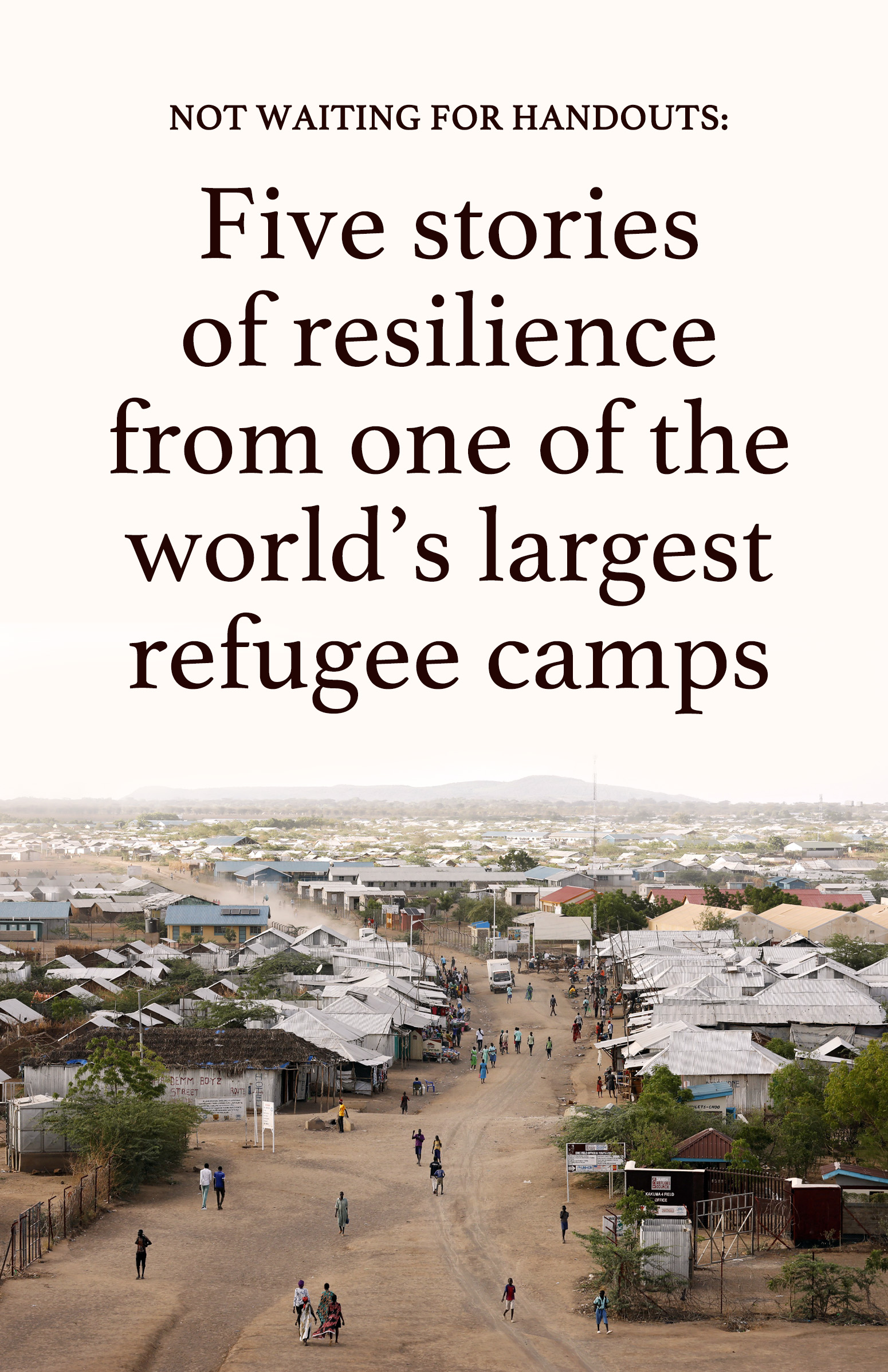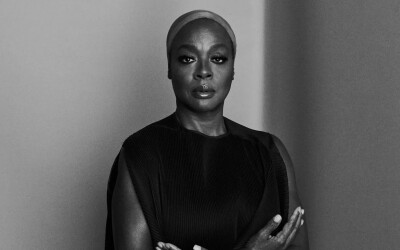Not waiting for handouts: Five stories of resilience from one of the world’s largest refugee camps
Today there are more than 70 million people around the world who have been forced from their homes. As crises get more prolonged, the only home that entire generations know, are refugee camps. The average length of displacement is rising, estimated at 26 years, and as of 2018, 78 per cent of all refugees were in protracted refugee situations. The stories we hear about them often show us their unsurmountable challenges, but life in the camps is more than scrambling for food and waiting for a better future. In some of the world’s largest camps, refugees and the native communities power their own economies. Students compete for admission into a better school, journalists report on daily news, entrepreneurs learn new skills and health workers deliver babies. And women are often a forgotten part of this workforce. With more than 186,000 residents, Kakuma refugee camp and Kalobeyei settlement located in the arid desert of north-western Kenya is one such place. On World Humanitarian Day, meet five women and girls who are doing the usual and unusual jobs that keep life going, and aspiring for more.
1 | Amina Rowimoh Hortense, film maker
Amina came to Kakuma refugee camp fleeing the conflict in the Democratic Republic of Congo in 2004. She was only 17. “One minute I was excited about going to the university and then all these dreams were gone…” she says. Amina traversed a long and difficult journey to heal, to grow, and become who she is now. She is a 25-year-old award-winning filmmaker, passionate about telling stories of refugee women, and has her own production company in Kakuma. “I started making films in 2016. My first film was about my own life.” Amina is a Film Training Graduate from FilmAid, an organization running programmes with UN Women and other UN agencies in Kakuma. “Most of the stories I tell [through my films] are to make people realize what pain others are going through. When someone is in pain, often they can’t tell themselves, they are silent, traumatized… I use the power of film to speak for them.” Her last film was about Female Genital Mutilation (FGM), which she screened inside the camp, and talked to men and women about challenging the practice. She is currently working on a film that explores the reality of life as a refugee. “I hate this name, refugee. I just want to belong somewhere,” she says. “We are aliens — like, we don’t exist, we don’t belong anywhere. You have a refugee document, and you’re so proud. You hold it like this [close to your chest]. You reach immigration and you show your document, and they may say, ‘what is this’? And they reject you.” “When I think of the future-after five or ten years-where am I going to be? Am I going to belong somewhere, or will I still be in this camp? Am I going to die here?”
2 | Christine Wambulwa, mechanic
Christine Wambulwa is Kenyan, and the only female mechanic in Kakuma town. Every day, by 7.30 a.m., she is at the vehicle repair shop along the highway. “I don’t have a weekend,” she says. “If someone has a vehicle break-down in the middle of the road, or in the bush, at any time, I will go. I like this job too much.” Christine grew up in Kakuma town watching her brothers. “When the boys made toy cars, I made toy cars, when they looked after cattle, I too looked after cattle. I thought I was a boy just like them!” When she grew older, there was not enough money to educate her and the family had many mouths to feed. She learned to repair vehicles. “The first vehicle I repaired was a Toyota lorry,” she says. “In the beginning, it was a little hard, I had to carry heavy things. But now we have better machines to lift heavy things.” Christine believes that women can do anything that men can do. But there are still some challenges in her line of work. “Men don’t believe that a woman can repair a vehicle. A man will think ten times before giving me a vehicle to repair,” she admits. That doesn’t stop Christine from doing the work she likes doing. She is the sole breadwinner of her family since her husband’s death. She is putting her own children through school and supporting her brothers and sisters too. “With the refugees, more opportunities have come too,” she says. “Things have opened up a little- there are more women drivers now. Earlier, very few girls went to school in this area. The culture was the main factor holding them back. But now many girls go to school-girls from Kakuma town and the refugee camp.” Christine’s message to other women: “Do not fear. Work is work. Nothing’s hard for a woman, it’s only in the mind.”
3 | Refika Cornoleus, stove-maker
In the makeshift homes and courtyards across Kakuma, fuel needs are high, to feed more than 186,000 mouths. Meet Refika Cornoleus, a refugee from Sudan and eco-friendly jiko-maker of Kakuma. Jikos are handmade wire-stoves. They disperse heat efficiently and take less charcoal. “It takes me 2–3 hours to make one, and I can sell them for 250–500 Kenyan shillings [USD 2–4],” explains Refika. Today people at the camp know about her jikos and she makes them to order. She has taught five others in her camp the art of making jikos, which she learned from her grandfather. When Refika escaped the war in Sudan with her six children, she left behind her husband and her grandparents. “I think of my grandfather when I make jikos,” she says. Her jiko business provides some additional funds to support her children. She longs for her husband but wakes up every day and gets to work. She is also taking some classes to improve her chances of getting a better job. Her favourite subject is English.”
4 | Beatrice Silas Kasiba, dressmaker
Beatrice Silas Kasiba is a busy woman. She is one of the best dressmakers in Kalobeyei settlement, where both refugees and Kenyans who are from the area live. She learned tailoring through the Danish Refugee Council project supported by UN Women and now teaches tailoring to other refugee women. She also mentors girls in the community and encourages them to go back to school. The girls listen to her, because Beatrice has gone through a lot, and survived. Beatrice ran for her life from Burundi after a brutal rape in 2015, following her husband to Rwanda and Uganda, before the couple finally reached Kenya. “When we reached UNHCR camp, we were given basic food and bedding. The food was different from what we were used to. At first, I couldn’t eat the food they gave us… I just lost it. We fasted for three days, then we started taking some porridge with water.” Traumatized and exhausted, she also suffered from chronic pain. “I used to be strong before, I used to do construction work. But since the rape, I couldn’t even carry a 5-litre container of water.” When Beatrice first met a humanitarian worker from the Danish Refugee Council, she asked, “if someone has no hope, can you return their hope?” That was the beginning of her journey to heal. “After going through counselling, I finally found some peace of mind. I accepted myself; I accepted that I am a human, like others,” she says. “You can see for yourself-now I am shining!” For Beatrice, sending girls to school, teaching them vocational skills so that they can earn an income, is the number one priority. “Look at me,” she says. “I make dresses. I go to class. I am a trainer. I get my own money. I have learned to budget and save. I learned mobile banking. I feel like I am in a new world!”
5 | Nyamam Gai Gatluak, student, aspiring software engineer
Seventeen-year-old Nyamam, from South Sudan, is ambitious. A student of Angelina Jolie Primary School in Kakuma, she is part of the IT club that participated in the International Day of the Girl Child events run by UNICEF, UNHCR, Unilever, UN Women and IamtheCode movement in 2018. Since then, Nyamam hasn’t looked back. “I want to be a software engineer,” she says. “I want to create my own applications and make learning become easier for girls.” “Not many girls and women are in the field of IT. Maybe I can create an app that teaches girls coding, even girls in rural areas [and refugee camps].” Nyamam is among only 60 girls who got admission into the boarding school in 2018, out of almost 500 who applied. She knows the challenges that girls in the camp face. “Many of them are not in school… Those who make it to school, when they come home, they have to leave the books and go to the kitchen to cook and do chores, because the boys don’t do such work. So, the girls don’t get time to study. Being in a boarding school is a privilege…More boarding school for girls in the camp will help.” “I want to create an app that teaches parents and girls about (girls’) rights in different (local) languages. The age of marriage in Kenya is above 18, but most parents don’t even know what the law says,” she explains.
Source: medium.com



